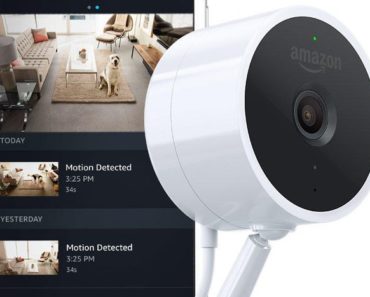Two smartphones, and three smart speakers. A gorgeous laptop and stylus. An upgraded virtual reality headset. A pair of wireless earbuds that can translate a conversation in real-time, like a Babel Fish. These are all being adding to Google’s existing stable of Chromecasts and Nest smart home devices. Most of them seem to exist for one simple reason: If you want something done right, do it yourself. In this case, that something is Google Assistant.
The company’s pragmatically named AI helper already lives on Google Home, last year’s Pixels, and lots of other smartphones—including the iPhone. You’ll even find it in speakers from Sony and others later this year. But Google showed that for Assistant to reach its true potential, and to realistically gain an edge over Amazon’s Alexa, Apple’s Siri, and the rest of its smart-assistant competition, it can’t rely on third-party partners, or glorified reference models. It needs an ecosystem. And it’s not interested in waiting for one to materialize.
The Assistant
“It all starts with reimagining hardware from the inside out,” said Google hardware guru Rick Osterloh, establishing the event’s theme. The “inside,” in this case, isn’t a processor or a subwoofer. It’s Assistant, the beating heart of each of Google’s new products.
Google Home Mini and Max, the minor and major key stereos, make for the easiest example, since “OK, Google” drives every interaction with them. While the Chromebook Pixel line that preceded the Pixelbook existed to promote Chrome OS exclusively, Google’s rebranded laptop features a dedicated Google Assistant button. Google also credited Assistant as the primary reason it bothered creating a stylus at all.
“When you’re using your Pixelbook as a tablet, it’s easiest to show your Assistant what you need help with on your screen,” said Google’s Matt Vokoun. “That’s why we created the new Pixelbook Pen.” Rather than leading off by showing its new stylus writing, Google’s first Pen demo was as an Assistant assistant, circling a musician to summon up information based on the selected image alone.
The Pixel Buds wireless earbuds don’t have Assistant directly on board, but pair them with your smartphone and Assistant pops up with one tap. If you talk with someone who speaks a different language, you can use Pixel Buds to translate both ends of your conversation in real-time; It works in 40 languages.
Then there are the phones, the original and most obvious Assistant vessels, which means we can gloss over them a bit. Except to note that when you squeeze the sides of the iPhone in iOS 11—or more specifically, the power button and a volume button simultaneously—it enters SOS mode, enabling fast access to emergency responders. When you squeeze the sides of a Pixel, it calls up Assistant.
These are all experiences that Google has created whole-cloth. It isn’t just putting Assistant in more premium devices, it’s ensuring that Assistant can do more interesting things. Which also means that on the precipice of the next major platform fight, Google’s taking a starkly different approach than it did with Android.
Going Alone
For years, Google’s hands-off approach with Android presented both a blessing and curse. Massive gains in volume came with inconsistent quality, as hardware partners squeezed the operating system into unforgiving sizes and weighed it down with unwelcome bloat. All the while, Apple refined iOS and the iPhone in lockstep, enabling Cupertino to release its Platonic smartphone ideal each year.
Creating what it thinks are best-in-class Assistant experiences helps show Google’s partners how to do it right. It also hedges against the probability that partners will be harder to come by. Android succeeded because it was the only iOS alternative, a handy shortcut for any hardware manufacturer needing a smartphone plan – meaning all of them.
That’s demonstrably not so with Assistant. Amazon’s Alexa leveraged its early lead, taking up residence in millions of homes, and sneaking onto iOS through the Amazon app. And it’s already scoring some third-party wins, most notably and most recently with Wednesday’s news that Sonos would put Alexa inside one of its speakers.
Sonos has said it will add Google Assistant and Siri too, eventually. But Alexa comes first. And even when Assistant does make it onto Sonos, it’ll be one of three players, just as it is on Ikea’s smart bulbs. Google found smartphone ubiquity because it was the default. To win the assistant game, it’s going to have to be the best.
That’s especially true given that Google’s most reliable smartphone partner, Samsung, not only made a Google Assistant of its own, but gave it a dedicated hardware button on its flagship Galaxy S8. Google may be able to put Assistant on every Android phone, but it can’t guarantee top billing.
What’s Next For Google?
If anything, Google’s hardware push shows just how vital Assistant’s success will be to the company going forward. Artificial Intelligence is becoming the thread that holds everything together.
Needless to say, creating premium products to support Assistant doesn’t guarantee that anyone will actually buy them. But the alternative would be to entrust Assistant’s future to other companies other than Google. Which is to say, there’s no alternative at all.






